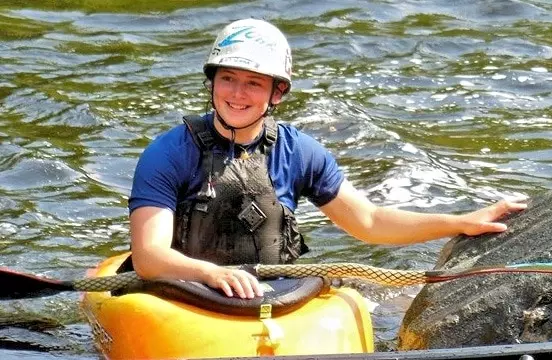Class II Clinics: Developing Your Whitewater Skills (and Thrills)
When asked about how he feels about teaching Class II whitewater kayaking clinics, Zoar Paddlesports instructor, Steve, claps his hands together and his face starts to glow: "Class II clinics are my favorite. I enjoy teaching Class II clinics because you get to show people many of the pearls of whitewater kayaking. It is also when I often see people making the fastest progress in developing their kayaking skills. It is an exciting time!"
At Zoar Outdoor paddlesports, a Class II clinic is an excellent option for folks who have been in a whitewater environment in a kayak or canoe a handful of times and have learned some basics but want to hone their skills. Steve mentions that "in a Class II clinic, instructors can help students foster a healthy perspective around the whitewater experience. People coming in for a Class II clinic are often still in discovery mode." During this level, instructors continue to promote good whitewater paddling techniques and develop the muscle memory needed to create a foundational level of proficiency that will be effective for advancing their kayaking. Class II clinics are tailored towards the student's specific skills and goals, which is a slight departure from all students learning the same techniques and skills in a novice course.
We asked Steve for an overview of one of his Class II clinics, and here is what we heard:
An Overview of a Class II Whitewater Kayak ClinicI always start my Class II clinics off with a morning meeting where we do introductions and goal setting. This is where Class II starts to diverge from a Novice clinic—I don't use as much of my morning meeting time to manage expectations, instead, I work with students to set goals that they are excited about. Once goals are set, I like to spend some time looking at whatever gear they have with them. It is important to take some time to talk through outfitting and do a deeper dive on the 5 essentials when people are more familiar with these tools.
The rest of the day is really catered to the student. I think of the day's instruction as more of a collaborative partnership where both the student and instructor are working together to build out the clinic's structure. Basic stroke technique is revisited and refined. I try to help students avoid common mistakes while they develop muscle memory which can prevent learning difficulties downstream. We also spend time diving deeper into reading water, learning compound strokes, and practicing more advanced maneuvering. If someone wants to dive into the world of rolling, I make sure we spend time laying the basics of this skill as well. I try to offer as much paddling as a person wants and can handle. It is often a long, satisfying, and fun day.
A Class II clinic is also where the Fife Brook section of the Deerfield River shines the most. This section of river is so perfectly geared to this chapter of whitewater learning. Class II is where people start putting the whitewater puzzle together. Novice clinics are where students start to find the pieces of the puzzle. Class II is where students start to put the pieces—paddling skills, equipment, and whitewater community—together. This is often when people really start to appreciate the sport as a whole.
Whether your goal is to use class II as a stepping stone to kayaking more difficult whitewater runs or as a destination itself, the skills taught in this class are sure to serve you well. Come join us at Zoar Outdoor paddlesports for your Class II clinic this summer!
When you subscribe to the blog, we will send you an e-mail when there are new updates on the site so you wouldn't miss them.

Comments